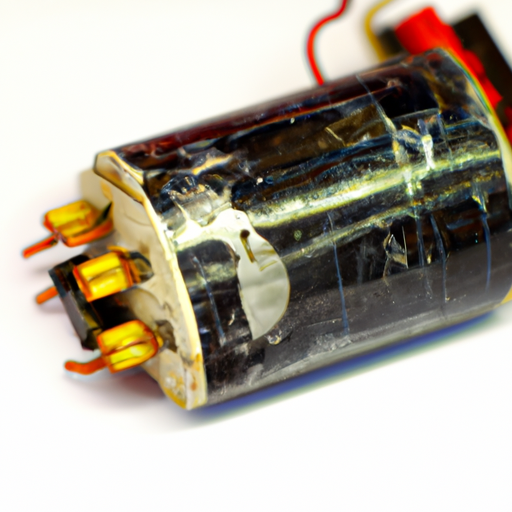Title: Understanding AC-DC Converters: Unveiling the Power Behind Electrical Systems

I. Working Principles of AC-DC Converters (300 words) AC-DC converters, also known as rectifiers, are electronic devices that convert AC power into DC power. The primary function of these converters is to rectify the AC waveform, which oscillates between positive and negative voltage values, into a steady DC voltage. This conversion process involves several stages, including rectification, filtering, and regulation.
1. Rectification: The first stage of an AC-DC converter involves rectifying the AC waveform. This is achieved using diodes, which allow current flow in one direction while blocking it in the opposite direction. Half-wave and full-wave rectifiers are commonly used configurations for this purpose.
2. Filtering: After rectification, the converted waveform still contains ripples or fluctuations. To smoothen the output, a filter circuit is employed, typically consisting of capacitors and inductors. These components help reduce the ripple voltage, resulting in a more stable DC output.
3. Regulation: The final stage of an AC-DC converter involves regulating the DC output voltage to ensure it remains constant, regardless of input variations or load changes. Voltage regulators, such as linear regulators or switching regulators, are employed to achieve this stability.
II. Types of AC-DC Converters (400 words) AC-DC converters come in various types, each designed to cater to specific applications and requirements. The most common types include:
1. Linear AC-DC Converters: Linear converters use linear voltage regulators to regulate the output voltage. They are simple, reliable, and cost-effective, making them suitable for low-power applications. However, they are less efficient and generate more heat compared to other types.
2. Switching AC-DC Converters: Switching converters, also known as switch-mode power supplies (SMPS), utilize high-frequency switching techniques to regulate the output voltage. They offer higher efficiency, smaller size, and better power density compared to linear converters. SMPS are widely used in various applications, including computers, telecommunication systems, and consumer electronics.
3. Isolated AC-DC Converters: Isolated converters provide electrical isolation between the input and output circuits, ensuring safety and protection against electrical shocks. They are commonly used in medical devices, industrial equipment, and power distribution systems.
4. Non-Isolated AC-DC Converters: Non-isolated converters do not provide electrical isolation and are often used in low-power applications, such as battery chargers, LED lighting, and small electronic devices.
III. Applications of AC-DC Converters (300 words) AC-DC converters find extensive applications across numerous industries and sectors. Some notable applications include:
1. Consumer Electronics: AC-DC converters power a wide range of consumer electronics, including smartphones, laptops, televisions, and gaming consoles. These converters ensure the devices receive the appropriate DC voltage for their operation.
2. Industrial Automation: AC-DC converters are vital in industrial automation systems, providing power to control panels, motor drives, and sensors. They enable efficient and reliable operation of machinery and equipment.
3. Renewable Energy Systems: AC-DC converters play a crucial role in renewable energy systems, such as solar and wind power. They convert the AC power generated by these sources into DC power for storage or distribution.
4. Electric Vehicles: AC-DC converters are essential components in electric vehicle charging stations, converting AC power from the grid into DC power for charging the vehicle's battery.
IV. Advancements and Future Developments (300 words) AC-DC converters have witnessed significant advancements in recent years, driven by the increasing demand for energy-efficient and compact power solutions. Some notable advancements include:
1. Wide Bandgap Semiconductors: The use of wide bandgap semiconductors, such as silicon carbide (SiC) and gallium nitride (GaN), in AC-DC converters has led to higher efficiency, reduced losses, and improved power density. These semiconductors can operate at higher temperatures and voltages, making them ideal for high-power applications.
2. Digital Control Techniques: The integration of digital control techniques, such as digital signal processors (DSP) and microcontrollers, has enabled more precise and flexible control of AC-DC converters. This allows for better regulation, fault detection, and adaptive power management.
3. Wireless Power Transfer: AC-DC converters are being developed to support wireless power transfer technologies, enabling efficient charging of devices without the need for physical connections. This technology holds great potential for applications in electric vehicles, consumer electronics, and medical devices.
Conclusion (100 words) AC-DC converters are indispensable components in modern electrical systems, facilitating the conversion of AC power to DC power for a wide range of applications. Understanding the working principles, types, applications, and advancements of these converters provides valuable insights into the world of power electronics. As technology continues to evolve, AC-DC converters will play a vital role in enabling more efficient, compact, and sustainable power solutions for various industries, paving the way for a future powered by clean energy and advanced electronics.